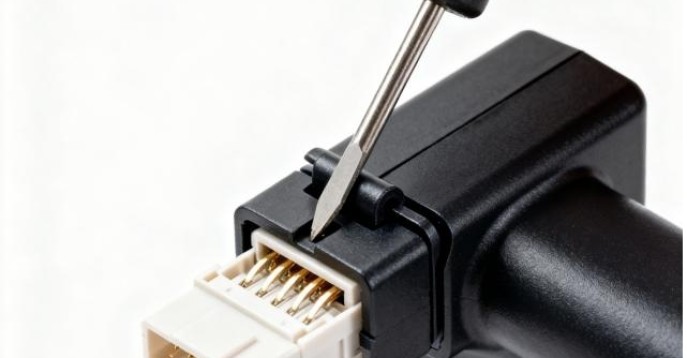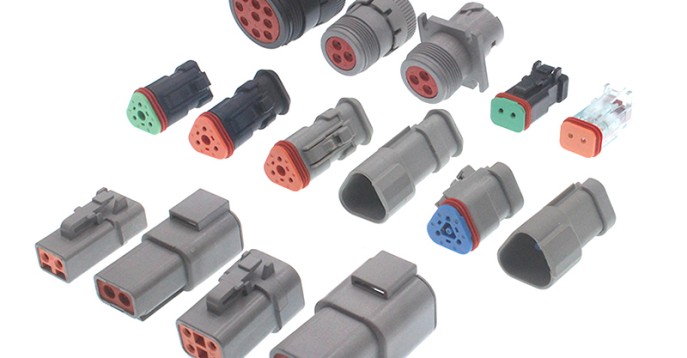Application of Copper Material in the Field of High Voltage Wire Harness
Compared with the wiring harness in traditional cars, the new energy vehicle wiring harness not only includes the common vehicle wiring harness that transmits electrical signals and the power required for the operation of low-voltage equipment but also the high-voltage wiring harness is an essential and important component.
The high-voltage wiring harness in new energy vehicles undertakes the important mission of safely and reliably transmitting the electric energy required to drive the vehicle and plays a key and important role in the safety, reliability, and stability of new energy vehicles.
Behind the prosperous market, in addition to strong policy support, the continuous development of new energy vehicle technology is also an important driving force.
Among the core technologies of new energy vehicles, in addition to the three-electric technology that has been widely discussed, the high-voltage wiring harness, which is the “artery” of electric energy transmission for new energy vehicles, has been widely recognized by the industry as the market pays increasing attention to the safety and reliability of new energy vehicles and Pay attention to.
The importance of high-voltage wiring harnesses in the field of new energy vehicles is increasing

As one of the cores of new energy vehicles, the power battery directly or indirectly provides energy for the vehicle; the drive motor uses the power provided by the power battery to drive the car; the electronic control system mainly manages the power output of the drive motor. It is the various wiring harnesses installed on new energy vehicles that connect these devices to achieve their respective functions.
Compared with the wiring harness in traditional cars, the new energy vehicle wiring harness not only includes the common vehicle wiring harness that transmits electrical signals and the power required for the operation of low-voltage equipment.
The high-voltage wiring harness in new energy vehicles undertakes the important mission of safely and reliably transmitting the electric energy required to drive the vehicle and plays a key and important role in the safety, reliability, and stability of new energy vehicles.
In new energy vehicles, the high-voltage wiring harness is divided into power battery high-voltage cable (connecting power battery and high-voltage box), motor controller cable (connecting high-voltage box and motor controller), fast charging harness (connecting fast charging port and high-voltage box), High-voltage accessory wiring harness (connect the high-voltage box to DC/DC, air conditioner, etc.).
Compared with traditional vehicles, power battery high-voltage cables, motor controller cables, and fast-charging wiring harnesses are new high-voltage wiring harness applications for new energy vehicles.
In order to meet the special requirements of new energy vehicles, the technical requirements for high-voltage wiring harnesses for new energy vehicles are more comprehensive and strict, especially for high-voltage wiring harnesses used in high-voltage and high-current modules。
Because of high power, interior space, and wiring design requirements, it is necessary to have High current resistance, high-temperature resistance, flame retardant, high flexibility, and EMC anti-shielding performance, etc., to meet the safety and power requirements of new energy vehicles.
For example, in pure electric new energy vehicles, the power supply voltage is generally above 300 V and the current can reach 500A. Therefore, the high-voltage wiring harness needs to have a higher temperature resistance level, generally between -40℃ and 125℃, and some need to reach 150℃;
Secondly, it is required that the allowable working temperature rise of the high-voltage wiring harness does not exceed 55K, so as to ensure that the temperature is stable within a safe range when working with the high current;
The diameter needs to reach 135mm2, and a thicker wire harness will cause greater bending stress, and when the wire harness is installed, the insertion and withdrawal force of the connector will also increase. If the material of the high-voltage wire harness has a certain degree of flexibility, it will help offset the bending stress and improve the reliability of the connection between the wire harness and the connector;
The electromagnetic interference generated, the high-voltage wire harness, and the electromagnetic shielding requirements generally require that the coverage density of copper wire braided shielding be ≥85%, and the diameter of the braided copper wire is Ø>0.1mm.
It should be noted that with the increasing popularity of 800V systems, the technical requirements for high-voltage wiring harnesses will also be further improved, which will bring new challenges to the layout of vehicle wiring harnesses.
The first challenge that needs to be faced is that the larger cross-section of the high-voltage wire harness will cause wiring difficulties. Generally, the turning radius of the high-voltage wire harness should be greater than 6 times the diameter of the high-voltage wire harness;
Secondly, the layout of the high-voltage wire harness needs to consider electromagnetic compatibility (EMC ), sources of interference, and high-voltage connection harnesses are recommended to be kept away from easily disturbed parts and their connection harnesses, and it is best to arrange them separately.
The distance between the high-voltage wire harness and the connecting wire harness of easily interfered parts should be more than 10cm. At the same time, placing the wire harness in the groove, angle, or close to the metal body of the metal body can effectively reduce electromagnetic interference.
To sum up, with the improvement of technical requirements for high-voltage wiring harnesses of new energy vehicles, how to control the working temperature rise of high-voltage wiring harnesses and reduce the cross-sectional area of wiring harnesses as much as possible under the condition of meeting the current carrying capacity is crucial for the application of high-voltage wiring harnesses in new energy vehicles.

Safe use and the layout of the interior space are of great significance. In order to meet the working temperature rise of the high-voltage wire harness and optimize the layout of the wire harness, the material selection of the high-voltage wire harness has to be considered.
At present, high-voltage wiring harnesses for vehicles mainly use copper materials as conductors, including bare round copper wires and tinned soft round copper wires twisted together. Copper material has excellent electrical conductivity (at 20℃, the resistance of copper is 0.0185 Ωmm2/m, and the resistance of aluminum is 0.0294 Ωmm2/m). In the case of a high current, its working temperature rise is lower.
On the one hand, it can reduce the heat loss during power transmission. On the other hand, the excellent thermal conductivity of copper material also ensures that the working temperature of the high-voltage wiring harness is stable within a safe range.
At the same time, due to the excellent electrical conductivity, the cross-sectional area of the copper wire can be smaller under the same load, which can effectively help the flexible arrangement of the high-voltage wire harness, including a smaller turning radius (the turning radius of the high-voltage wire harness generally needs to exceed 5% of the diameter of the wire harness ~6 times or more);
In addition, the thinner wire harness can reduce the bending stress. When installing the wire harness, the plugging force of the connector is smaller, which helps reduce the difficulty of installation and maintenance, and improves the stability and reliability of assembly; moreover, the smaller cross-sectional area can help the high-voltage wire harness to be flexibly arranged in grooves and angles that fit the metal body, or to be placed close to the metal body to effectively reduce electromagnetic interference.
In addition to good electrical conductivity, another advantage of copper as a conductor material for high-voltage wire harnesses is better tensile strength and bending properties. Metal copper has good mechanical properties, the tensile strength is 200-240 MN/M2, and the elongation can reach 50%. Its good plasticity makes it easy to process and has a high plastic deformation capacity.
It can be rolled and extruded Products of various shapes and sizes are made by pressure processing methods such as pressing and stretching, and the high-voltage wire harness with copper material as the conductor can withstand the vibration and friction that occur during the driving process of the vehicle during use, and has high reliability and reliability, Longer service life.
Copper materials also have good chemical stability, good corrosion resistance, and are easy to weld. The operating environment of vehicles is complex and harsh, and high-voltage wire harnesses and terminal joints will inevitably work in corrosive environments such as humidity and salt spray.
According to the user experience of traditional automotive wiring harnesses, in humid, high temperature and vibration environments, such as friction and collision with other components, it is prone to insulator wear, joint looseness, wire corrosion, and other phenomena, which will lead to failures such as open circuit or short circuit.
As high-voltage wire harnesses carry higher voltages, greater currents, and greater stress on terminals and connectors, higher safety requirements require conductor materials with better chemical stability.
High-quality copper materials can not only ensure long-term good contact between terminals and connectors, and avoid electrochemical corrosion but also slow down the effect of corrosion on wire harness conductors after the insulation layer is aged or damaged. And this field is also one of the main difficulties for other materials to be used as high-voltage wire harness conductors for comprehensive research and verification.
The development of high-voltage wiring harness – the balance of safety and lightweight
Safety is the most important index of high-voltage wiring harnesses. The safety design of a high-voltage wiring harness is mainly reflected in insulation, withstand voltage protection, overload, connector IP level, equipotential balance, high-voltage wiring harness wiring layout, etc.
From the perspective of safety, the use of materials with better electrical conductivity and thermal conductivity is conducive to optimizing the energy efficiency of high-voltage wire harnesses and reducing operating temperature rise; the use of materials with better tensile strength and plasticity helps to improve the production and assembly of high-voltage wire harnesses.
Reliability in the face of vibration and friction during vehicle operation, and it is conducive to optimizing the spatial layout of the wiring harness; the use of materials with more stable chemical properties can prevent corrosion, ensure good contact between the high-voltage wiring harness terminals and the connector, and reduce the risk of damage caused by contact. Poor security risks.
Lightweight is a common concern of both new energy vehicles and traditional vehicles, and high-voltage wiring harnesses are an important area for lightweight new energy vehicles. Lightweight helps to improve energy efficiency, increase the cruising range of new energy vehicles, and at the same time reduce costs appropriately.
However, when considering lightweight solutions, it is necessary to ensure system safety, and comprehensively consider system-wide risks and life-cycle costs.
First of all, any lightweight solution cannot be at the cost of increasing safety risks and needs to be lightweight within the safety range.
Secondly, lightweight design cannot only consider local optimization but needs to comprehensively consider the lightweight and cost of the entire vehicle system.
For example, for the lightweight of high-voltage wire harness materials, in addition to considering the change of the wire harness itself, it also needs to consider its impact on terminals and connectors, changes in electromagnetic shielding, and the impact on system maintenance and repair in the future life cycle of the entire vehicle.
In short, as the blood vessel and nervous system of new energy vehicles, the high-voltage wiring harness has an impact on the whole body of new energy vehicles. The safety of high-voltage wiring harnesses is the basic guarantee for the safety of new energy vehicles, and its technological development plays an important role in improving the performance of new energy vehicles.
--- END ---
LATEST NEWS














